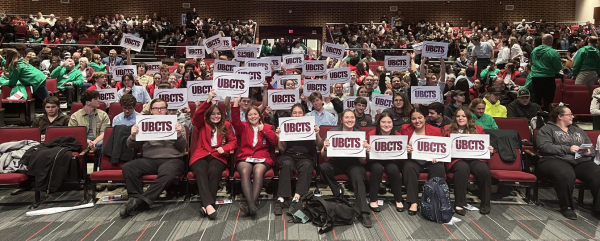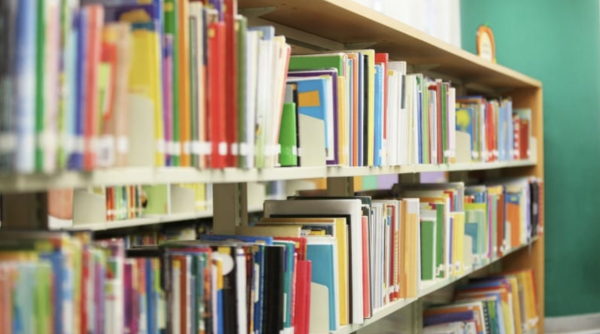Firsthand Opinions on QCHS Rules and Policies
February 17, 2022
Rules are important for any program, business, and school. Rules help to establish the quality of safety and learning within the school. Without these guidelines, the school would have no structured functions or boundaries.
Quakertown High School “enforces” a student handbook full of rules, policies, and instructions that the students in the community are expected to follow. PawPrints staff constructed a survey on two subjects based on those rules, bathroom closures, and dress code. Although completely unrelated to each other, students seem to have strong opinions on these topics.
PawPrints surveyed a total of 82 students. The survey was able to reveal the students’ feelings about issues within the school, starting with the topic of bathroom closures. Earlier in the year, some social media challenges that swept through the school. These challenges encouraged the defacement of the school’s property, mostly the bathrooms. Taking soap dispensers, throwing toilet paper, even smashing toilets. This led to the closure of 4/6 bathrooms. After a while, the bathrooms were reopened. Currently, there is still one bathroom, next to the QPAC, that is closed. There is a sign on the door that says, “Bathroom temporarily closed due to student caused damage…” The bathroom has long been fixed and cleaned up, and it is even opened after school for sports and other activities. The survey posed the question, “Have you ever lost valuable class time walking to an open bathroom? (I.E- lunch, band, choir, library, etc).” Of the students surveyed, 57% said yes. We received additional feedback on this subject, some of which included, “It’s frustrating that during class time is wasted walking around the WHOLE school just to use the bathroom.”
“I think it is ridiculous. The actual incident itself is unacceptable. I am frustrated with this bathroom closer because at lunch if I need to use the restroom I have to go all the way to the cafeteria and I eat near the Qpac.”
“It is very annoying, especially for music students who need to use it during class, or pride. The person that broke the toilet wasn’t even in band. They don’t get the long-standing punishment and they probably don’t even care. Instead, we (the music students) have to run across the entire building (TAKING AWAY FROM CLASS TIME) just to use the restroom. It needs to re-open.”
What can be done about these issues? With classes only being 45 minutes, a 10-minute walk to and from the bathroom on the other side of the school should not have to be included in that time. If the administration doesn’t plan on opening this bathroom anytime soon, some sort of change needs to be made for the students who have classes surrounding that bathroom. One student suggested, “…at least for the band and choir kids there should be a key put in each of the 2 rooms and when someone has to use the bathroom they take the key, use the bathroom, lock it back up and then bring the key back.” This system could prevent the entire school from using and possibly dismantling the bathrooms, but also permit the band and choir students to use them, removing the disadvantage placed on them.
We also asked students if they were aware that the bathrooms were open to the public for sports, clubs, etc, after school. Only 42.7% of the surveyed population had been previously informed of these details. Now that the students had this knowledge, PawPrints asked their opinions on it. Some of the replies include, “I don’t really understand why it’s closed because they open it again for sports after school. If they wanted it closed “due to student caused damage,” they should keep it closed to all students even after-school hours.”
“I find it utterly ridiculous as if it was damaged, it would still be closed during after-school activities.”
“A few people making a bad choice should not affect the other students, especially since the after-school crowd gets preferential treatment.”
On page seventeen of the QCHS student handbook, it exemplifies three levels of actions and disciplinary protocols. In level three, “destruction of property/vandalism” and “theft or possessing stolen property” are listed. Nowhere in the “consequences will include” section says anything about penalizing a large group based on one student’s actions. Therefore, the few students participating in the destructive actions against the school bathrooms should not be the downfall of the entire school.
The dress code is also a hot topic among the QCHS students. In the handbook, the following requirements are listed as not allowed.
- “Garments without measurable and pronounced sleeves (no tube tops or spaghetti straps).
- Visible underwear, including waistbands or straps on undergarments worn under clothing.
- Hats, hoods, bandannas, scarves, and other head coverings during the school day (7:05 through dismissal.)
- Clothing that is revealing, exceptionally tight, or form-fitting. This includes sheer or see-through clothing. No private parts, including stomachs and cleavage, may be exposed”
Of the 82 students surveyed, only 2.5% responded that they were “satisfied” with the dress code. The other 97.5% are either very dissatisfied or neutral. PawPrints also offered multiple options as to why the students were dissatisfied with the dress code. The options were inconsistent, difficult to follow, doesn’t keep up with fashion changes, reasons for dress code are unclear or unreasonable, or clear gender distinctions (sexist). The highest voted option, with 68% of votes, was the dress code being sexist. Some students voiced strong opinions on this, some of which said, “The dress code is deeply sexist and so outdated. Instead of punishing females by not letting them wear what they want, teach the men or anyone in the school to be respectful and not weird.”
“Dress codes are so unbelievably sexist and unfair. I know for a fact that the vast majority of kids do not care what you’re wearing. It is not distracting- of course we need some boundaries, but girls can not control cleavage- especially in the summer.”
“I don’t think it is fair that girls have to worry about what they put on every day to not ‘distract’ a man.”
The second most voted from the list was inconsistent with 65%. The levels of dress code enforcement and students that are individually approached and pulled aside to talk about their clothing are not tracked, but students have pointed out the inconsistency with the implementation of the dress code. Students say, “The dress code itself is clear but dress code enforces are very inconsistent. I think, for example, wearing hats in school should be fine, but some teachers loudly yell at students when they see beanies or baseball caps. Other teachers do not care at all.”
“…they just choose who to enforce it on. One girl on the basketball team was wearing a crop top equal to the length of mine. She was dress coded because she had been in the past and I wasn’t.”
If there is going to be a set dress code, it should be one that all teachers and students can follow and enforce. If half of the teachers have their own views and strict thoughts about the dress code and others don’t, students cannot be expected to follow through with it if there is no consistency.
At the end of all of this, one of the most important takeaways is the lack of consistency in enforcing the school rules. Not arguing for or against stricter enforcement, but it is hard for a student to behave properly when the rules are not clear. The bathroom has been closed for at least three months, over damage done by one student, while the dress code is broken every day by half of the school, and nothing is done. Quakertown High School should re-evaluate their priorities in order to create a more understanding environment between students and administration.














